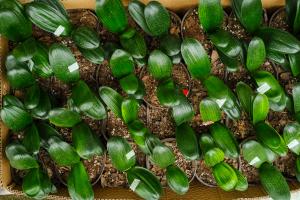Introduction
Garlic is a popular plant that is grown by many people for its medicinal and culinary benefits. To grow healthy and strong garlic plants, it is important to provide them with the right amount of water. Water is essential, but too much or too little can have negative effects on the growth and development of garlic plants. In this article, we are going to explore when to water garlic plants to ensure optimal growth and yield.
Understanding Garlic Plant Water Requirements
Before we talk about when to water garlic plants, it is important to understand their water requirements. Garlic plants require well-draining soil that is rich in organic matter. They prefer to grow in soil that is moist but not waterlogged. Garlic plants need water to grow, but too much water can lead to root rot and other diseases. On the other hand, too little water can cause the plants to wilt and stunt their growth.
When to Water Garlic Plants
The best time to water garlic plants is in the morning. This allows the plants to absorb the water they need during the day when the weather is warm and sunny. Avoid watering garlic plants in the evening or at night, as this can promote the growth of fungal diseases. During hot and dry weather, garlic plants may require more frequent watering to prevent wilting.
How Often to Water Garlic Plants
The frequency of watering garlic plants depends on various factors such as the climate, soil type, and stage of growth. In general, garlic plants should be watered when the top inch of soil feels dry to the touch. This could be once a week or every few days, depending on the weather and soil conditions. It is important to avoid overwatering garlic plants, as this can lead to root rot and other diseases that can affect the growth and yield of the plant.
Watering Techniques for Garlic Plants
There are different ways to water garlic plants, depending on the size of the garden and the water source. One way is to use a watering can or hose to water the plants at the base, avoiding wetting the leaves. Another way is to install a drip irrigation system that delivers water directly to the roots, reducing water loss through evaporation. Whichever method you choose, make sure to water the plants thoroughly, avoiding water stress and ensuring optimal growth and yield.
Conclusion
Watering garlic plants at the right time and in the right amount is crucial for their growth and development. By understanding their water requirements, you can provide the plants with the optimal conditions to thrive. Remember to water them in the morning, avoid overwatering or underwatering, and use a watering technique that suits your garden size and water source. With proper care, your garlic plants will produce healthy and flavorful bulbs that you can use in many delicious recipes!

 how many times do yo...
how many times do yo... how many planted tre...
how many planted tre... how many pine trees ...
how many pine trees ... how many pecan trees...
how many pecan trees... how many plants comp...
how many plants comp... how many plants can ...
how many plants can ... how many plants and ...
how many plants and ... how many pepper plan...
how many pepper plan...





























